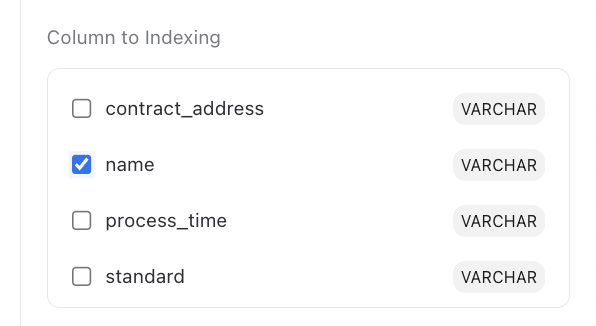GraphQL API Builder
How to Build a GraphQL API
With API Builder, you can create your own GraphQL API in minutes. In ZettaBlock, there are two ways to build a GraphQL API:
- Build with a new query,
- Build with a saved query.
Option 1. Build with a new query

To create an API with a new query, you need to visit the Query Builder first. You can explore blockchain and other data via DataHub, and then write SQL to query the data. After the query is finished, click the “Use" button in the upper right site to customize the API.
Option 2. Build with a saved query
Additionally, you can select any saved query to create an API. Visit your workspace, enter API Builder, select a saved query in the query list, and click the “Use” button. Now you can start configuring your API.
Configure API

API Transformation Code
API transformation code is the SQL query used to materialize and backfill a table in the database for the API.
Data Refresh Interval
Data Refresh Interval decides how often the data is refreshed. ZattaBlock provides several options, from real-time to 24 hrs. Also, you can choose "no fresh", which means that the underlying API table will never be updated. No refresh is used when the raw data used to create the API is rarely updated, such as system metadata.
In short, the shorter the refresh interval, the more real-time the API but it will consume more compute units.
Creating real-time APIsIn order to ensure your API will refresh in real-time, you will need to take the following steps:
- Choose a real-time table, such as any Ethereum table, price table, and others with a ⚡️ symbol.
- Run the query on the real-time database.
- When creating the API, choose the refresh interval as "real-time", and choose your indexing columns as per usual.
Description
Description is a field where you can give the API a brief description.
Incremental Data Refresh

This is an advanced option for users who want to further optimize the API cost and performance. With incremental data refresh, you can refresh only data that needs to be processed, either data that has changed or arrived fresh after the last time the API was refreshed. Incremental data refresh significantly decreases the API cost and processing time. For example, we use data_creation_date or the latest timestamp to refresh only data within the last 24 hours.
To enable incremental data refresh, you need to click the toggle, fill in the primary key and the Incremental SQL Code.
This option is not recommended for the dataset with more than 1 million records for now. The limit will be removed later on.
To read more about Incremental Refresh, please refer to this doc.
Set Primary Key
Primary key is a unique and not null key in the API table. There’s only one primary key in a table, which may consist of single or multiple fields. Incremental refresh will use this key to overwrite stale partitioned data.
Incremental SQL Code
Incremental SQL code is used to partially refresh the data, which could greatly reduce the cost by controlling how much data to scan and how to scan. The incremental SQL schema must be compatible with the API transformation SQL schema.
Index Fields (Optional)

This is also an advanced option for optimizing API query performance. Indexing makes fields faster to query by creating pointers to where the API data is stored within ZettaBlock virtual database. You can pre-index any field that may be used for querying the API later on.
You can also config the type for the index fields, ZattaBlock now supports these types:
- Varchar
- Boolean
- Small Int
- Integer
- BigInt
- Real
- Double
Note that we will support the date and timestamp types in the future.
After all configurations, click "Deploy GraphQL" and your GraphQL API will be generated!
Updated 3 months ago

